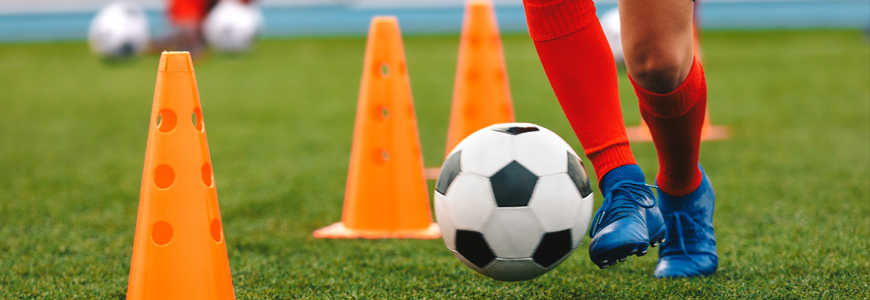As one of only three accredited FIFA Medical Centres of Excellence in the United States, Duke sports medicine is leading in research and care for different injuries related to soccer. Brian C. Lau, MD, a Duke sports medicine orthopaedic surgeon and the new medical director for the center, brings a rare combination of fellowship experience in shoulder, knee, foot, and ankle to the interdisciplinary team.
Question: What types of cases are most common for this center?
Lau: We specialize in sports injuries of the knee, foot, and ankle and have experts in hip injuries. There's also a high incidence of concussions in soccer as well, and we're focusing a lot on concussion care and rehabilitation as well as preventive protocols. Because our team helps take care of the professional soccer player population, we have the expertise to work with amateur players as well, offering them the same level of care.
Question: What resources does the center offer, and how have care protocols shifted to meet patient needs during the COVID-19 pandemic?
Lau: We offer tons of different resources for soccer players—sports performance and physical therapy expertise, sports nutrition, biomechanics, imaging, surgical and non-surgical treatments, and rehabilitation—all under one roof. However, to reduce the number of inpatient visits during the pandemic, we are offering telehealth visits as a screening method and virtual physical therapy and follow-up for appropriate patients.
While most medical offices are now offering some form of telehealth, virtual physical therapy is pretty unique to Duke. From our preliminary feedback and research, patients find it very useful and indicate that they are equally as happy with the telehealth option as they are with in-person visits.
Question: What kinds of research are you prioritizing for the center?
Lau: We are collaborating with U.S. Soccer and the other two U.S. FIFA Medical Centres of Excellence on research looking at injury prevention strategies used at the 2019 Women’s World Cup and the most common non-contact injuries sustained for professional female athletes. The study found that several factors such as accumulated fatigue and congested match schedule during the cup and in preceding club games contributed to injury risk. The group is also working to develop a consensus on performance health to develop protocols for injury prevention, load management, and return to play using innovative patient monitoring technology.
At Duke, we are also working with injury prevention and tracking injuries in the youth population. We also have the Michael W. Krzyzewski Human Performance Laboratory, which is a biomechanical lab that works to understand how body movements and neuromuscular control can affect injury, surgery, rehabilitation, injury prevention, and fatigue.
Question: How does the center provide outreach to the local soccer community?
Lau: Our clinical team—including physicians, physician-assistants, athletic trainers, and physical therapists—provides coverage during games for several local professional and amateur clubs in the North Carolina Triangle area and works with team trainers of high school and university teams. At the start of the COVID-19 pandemic, we created more than 30 videos to help club athletes stay in soccer shape while they couldn’t practice. As the center continues to grow, we also plan to create a soccer camp for the local community that teaches players about proper training and injury prevention.
